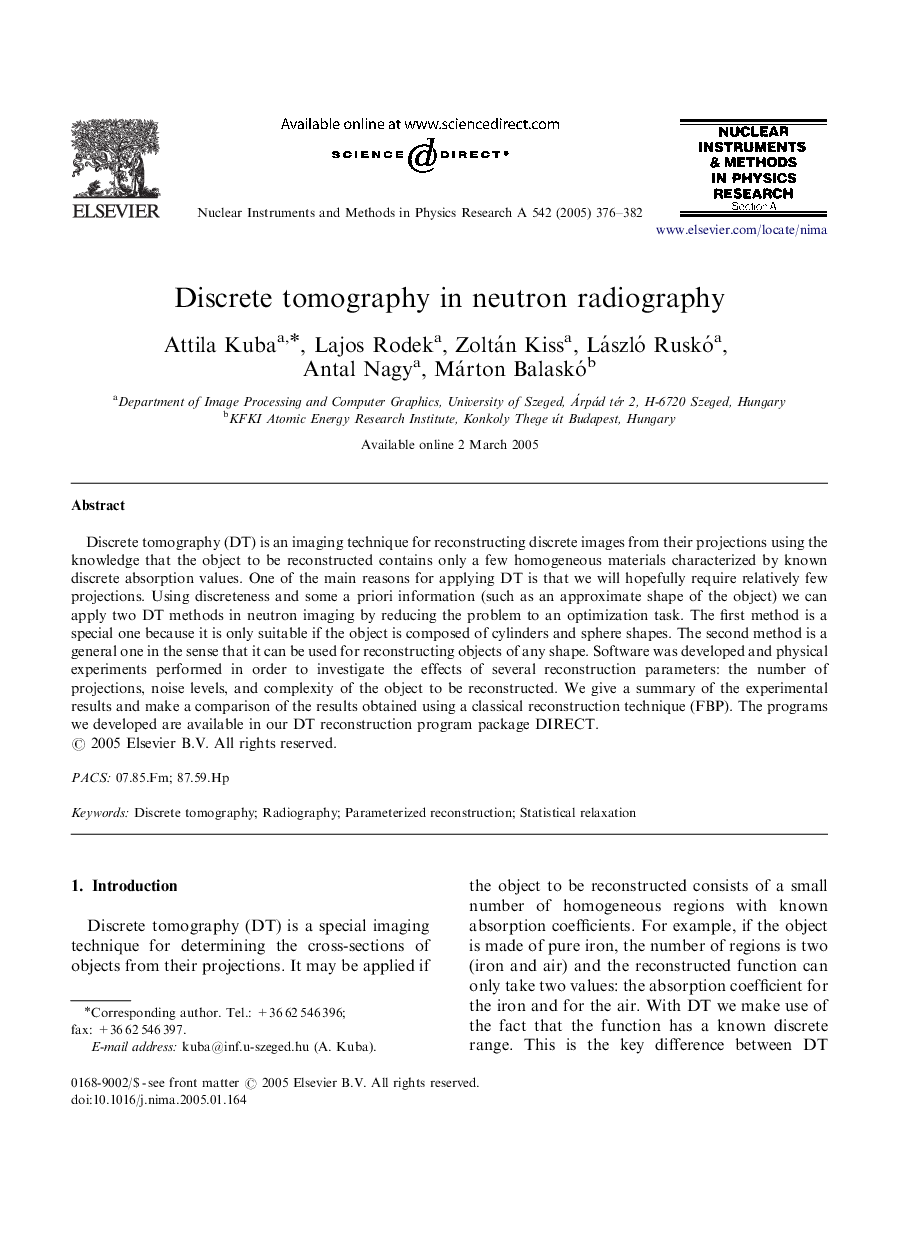| Article ID | Journal | Published Year | Pages | File Type |
|---|---|---|---|---|
| 9845609 | Nuclear Instruments and Methods in Physics Research Section A: Accelerators, Spectrometers, Detectors and Associated Equipment | 2005 | 7 Pages |
Abstract
Discrete tomography (DT) is an imaging technique for reconstructing discrete images from their projections using the knowledge that the object to be reconstructed contains only a few homogeneous materials characterized by known discrete absorption values. One of the main reasons for applying DT is that we will hopefully require relatively few projections. Using discreteness and some a priori information (such as an approximate shape of the object) we can apply two DT methods in neutron imaging by reducing the problem to an optimization task. The first method is a special one because it is only suitable if the object is composed of cylinders and sphere shapes. The second method is a general one in the sense that it can be used for reconstructing objects of any shape. Software was developed and physical experiments performed in order to investigate the effects of several reconstruction parameters: the number of projections, noise levels, and complexity of the object to be reconstructed. We give a summary of the experimental results and make a comparison of the results obtained using a classical reconstruction technique (FBP). The programs we developed are available in our DT reconstruction program package DIRECT.
Related Topics
Physical Sciences and Engineering
Physics and Astronomy
Instrumentation
Authors
Attila Kuba, Lajos Rodek, Zoltán Kiss, László Ruskó, Antal Nagy, Márton Balaskó,
